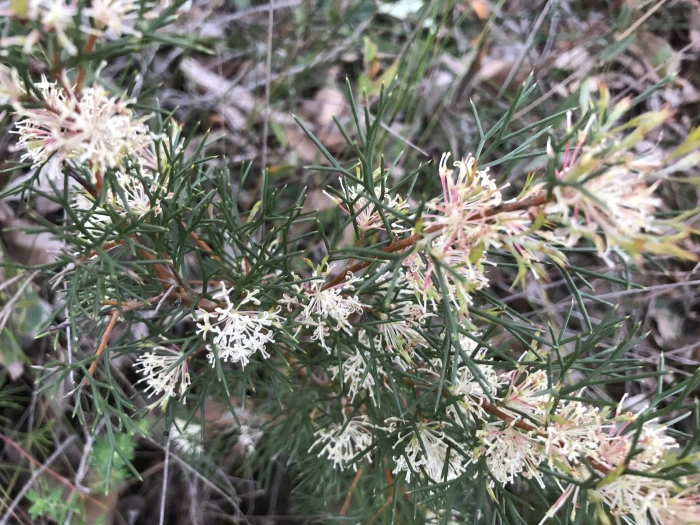Curved Leaf Grevillea
(Grevillea curviloba)
Curved Leaf Grevillea (Grevillea curviloba)
/
/

Callan Wood
CC BY 3.0
Image By:
Callan Wood
Recorded By:
Copyright:
CC BY 3.0
Copyright Notice:
Photo by: Callan Wood | License Type: CC BY 3.0 | License URL: http://creativecommons.org/licenses/by/4.0/ | Occurence ID: https://www.gbif.org/occurrence/1668767917 | Publisher: Atlas of Living Australia |








Estimated Native Range
Climate Requirements for Franklin, Tennessee
| This Plant | Your Site | Plant Suitability for Your Location | ||
|---|---|---|---|---|
| • Precipitation | 21" - 73" | 52" | Aquatic | Aquatic |
| • High Temp. | 72°F - 94°F | 90°F | Your summer temperatures are normal for this plant. | Excellent |
| • Low Temp. | 22°F - 64°F | 26°F | Your winter temperatures are normal for this plant | Excellent |
This plant may not grow well at your location - your precipitation is too high.
Summary
Grevillea curviloba, commonly known as Curved Leaf Grevillea, is an evergreen shrub native to the open woodlands and shrublands of Southwestern Australia. It typically grows to a height of 3-6 feet (0.9-1.8 meters) and a width of 7-13 feet (2.1-4 meters). The plant is characterized by its distinctive curved leaves and its profuse white to cream spider-like flowers, which are most abundant in winter and spring and are highly attractive to nectar-feeding birds and insects. The bark is not particularly notable, but the plant’s overall form is dense and spreading, making it useful for creating low screens or hedges.
Curved Leaf Grevillea is valued for its drought tolerance and its ability to thrive in poor soils, making it a low-maintenance choice for gardeners. It is often used in xeriscaping, as a feature shrub in native plant gardens, or for erosion control on slopes. This shrub prefers full sun exposure and is adapted to soils with good drainage, ranging from sandy to loamy. While it is generally pest and disease resistant, it can be susceptible to root rot if overwatered. It is also important to note that Grevillea species can be sensitive to phosphorus; therefore, fertilizers formulated for native Australian plants are recommended.CC BY-SA 4.0
Curved Leaf Grevillea is valued for its drought tolerance and its ability to thrive in poor soils, making it a low-maintenance choice for gardeners. It is often used in xeriscaping, as a feature shrub in native plant gardens, or for erosion control on slopes. This shrub prefers full sun exposure and is adapted to soils with good drainage, ranging from sandy to loamy. While it is generally pest and disease resistant, it can be susceptible to root rot if overwatered. It is also important to note that Grevillea species can be sensitive to phosphorus; therefore, fertilizers formulated for native Australian plants are recommended.CC BY-SA 4.0
Plant Description
- Plant Type: Shrub
- Height: 3-6 feet
- Width: 7-13 feet
- Growth Rate: Moderate
- Flower Color: White, Cream
- Flowering Season: Winter, Spring
- Leaf Retention: Evergreen
Growth Requirements
- Sun: Full Sun
- Water: Low
- Drainage: Medium, Fast
Common Uses
Bee Garden, Bird Garden, Butterfly Garden, Drought Tolerant, Fragrant, Groundcover, Hummingbird Garden, Low Maintenance
Natural Habitat
Open woodlands and shrublands
Other Names
Common Names: Curve Leaf Grevillea, Spider Flower
Scientific Names: Grevillea curviloba
GBIF Accepted Name: Grevillea curviloba Mc Gill.